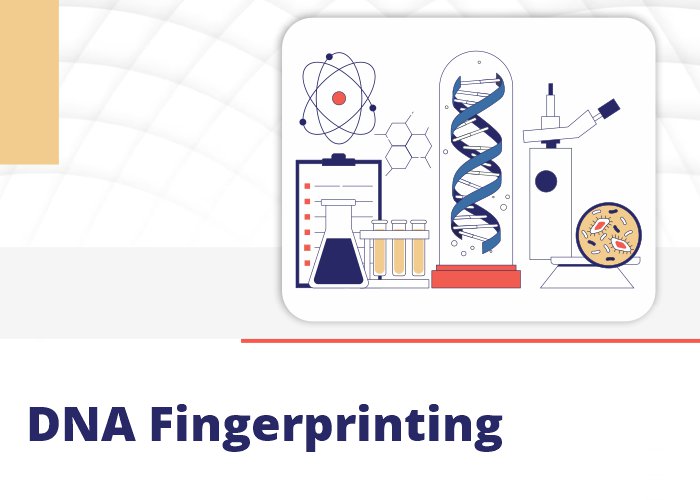
DNA fingerprinting and forensic biology hit the core of mysteries solving and delivering justice. In this way, when analyzing genetic material, investigators can discover people, estimate their connections and connect them to certain offences. The course in DNA fingerprinting and forensic biology offers the necessary information and experience to discover secrets stored at the cellular level.
What is DNA Fingerprinting and Forensic Biology?
It is a technique of determining identity or relationships by conducting examinations on DNA structure of an individual. This technology is most commonly used together with forensic biology, which deals in body fluids like blood, hair, spit, and body tissues. Both of them compose the significant fundamentals of present day criminalistics, and provide exceptional precision in recognizing individuals and connecting articles to scenes of crime.
Forensic DNA evidence has given new meaning for criminal investigation because the results achieved are inarguable, whether it is evidence against a suspect or in favor of the accused.
Wide Range of Applications
Apart from criminal cases, DNA fingerprinting can be applied in cases of paternity suits, people identification, and identification of victims in the event of catastrophes and in wildlife management.
Promoting Career Progress
Given the ever growing importance of biological evidence, those with background knowledge in DNA fingerprinting and forensic biology are in common demand by FBI, research facilities and consultancy.
What do Learners Learn in a DNA Fingerprinting and Forensic Biology Course?
A full credit course expands knowledge in understanding genetic/biological evidence & using proper methods of analysis. Here’s an overview of the key topics covered:
1. Science of DNA
DNA Structure and Function: Introducing students to the complex structures using chemistry as a foundation learning the make-up of life.
Genetic Variability: What makes each person’s DNA different.
Inheritance Patterns: Of learning how the genetic information within DNA is inherited to the subsequent generation.
2. DNA Fingerprinting Techniques
STR Analysis: Genotyping of short tandem repeats for the identification of an individual.
PCR (Polymerase Chain Reaction): To increase the amount of DNA needed for analyses.
Gel Electrophoresis: Isolating the DNA fragments in order to produce profiles distinct from one another.
3. Methods of Collection and Preservation of Criminal Evidence
Crime Scene Protocols: Bio samples collection and handling procedures.
Contamination Prevention: Preservation of DNA samples as evidence.
Storage Techniques: Sample collection and storage for future use in comprehending situations.
4. Forensic Biology Applications
Bloodstain Analysis: Determining blood types and dynamics for deducing the crime scene.
Hair and Fiber Analysis: Explaining how cross sectional study compares human and non-human samples.
Touch DNA: How a person’s skin cells can be used to extract their DNA which may have been left behind on a surface.
5. Legal and Ethical Issues
- Dissection of rules of admissibility of DNA evidence presented in court.
- Some aspects of DNA testing which must be protected include: Protected status: As a way of ensuring that DNA test results are credible and reliable, the individuals involved must be protected from outsiders as they undergo the test.
- Legal documentation necessary and recording system for legal actions.
Who Should Take the DNA Fingerprinting and Forensic Biology Course?
This course is ideal for:
Forensic Science Students: Acquiring skills in genetics and biology specialty.
Law Enforcement Professionals: Adapting an understanding of how to properly gather and properly use DNA evidence.
Biologists and Researchers: Knowledge contributions to genetics and molecular biology.
Legal Professionals: On genomics and gene expression: Improving knowledge of the strategies for the interpretation and DNA evidence in criminal trials.
Medical and Laboratory Technicians: Looking for professionals specialized in forensic uses of DNA.
Skills You’ll Develop
DNA Profiling Expertise
Get acquainted with generating and analyzing DNA profiles with accuracy.
Evidence Handling
Learners should be able to identify and follow standard procedures for identifying, securing, and documenting biological evidence.
Critically Evaluation and Analysis
Lead to the growth of the capability of consciously processing sophisticated informative genetic information and being able to make correct conclusions.
Legal Knowledge
Learn the relation between science and law, in order to keep the evidence relevant and valid in the process of trial.
Uses of DNA Fingerprinting and Forensic Biology
Criminal Investigations
Suspect to crime scene connection and unknown human remains identification.
Paternity and Family Disputes
Providing advice on cases of parentage disputes and succession matters.
Mass Disaster Identification
Recognizing victims of natural disasters or acts of terror, victims of accidents or other mishaps.
Wildlife Forensics
Reducing poaching and wildlife trade through the examination of animal’s genetic makeup.
Medical Research
Exploring irresponsible genetic behavior and creating medicines tailored to DNA.
Trends in DNA Fingerprinting and Forensic Biology the Future
The field is still growing, and with every new twist in technology there is an improvement in accuracy and speed. With the emergence of NGS technology high throughput and comprehensive analysis of DNA is becoming feasible. Finger size DNA analysis kits are also now available and that means investigators can start analyzing evidence at the crime scenes.
Furthermore, the databases utilized in forensic are growing and that make it easier to search for the match of dna profiles and solve cases that have remained dormant for some time. With such advances, people with expertise in DNA fingerprinting and forensic biology will be anticipating innovative advancements in the delivery of justice.
Conclusion
From criminal investigations to discovery of the truth about an individual and even personality identification, a DNA fingerprinting and forensic biology course is your starting point to understanding life at its simplest level. No matter if you love justice, science or just plain puzzles this course will teach you how to make a difference in the real world.
Meet the world of forensic biology, where defenses’ cells are pieces of stories and the truth progresses along with every attempt. This is where your voyage into solving mysteries at cellular level starts.





Leave a Reply